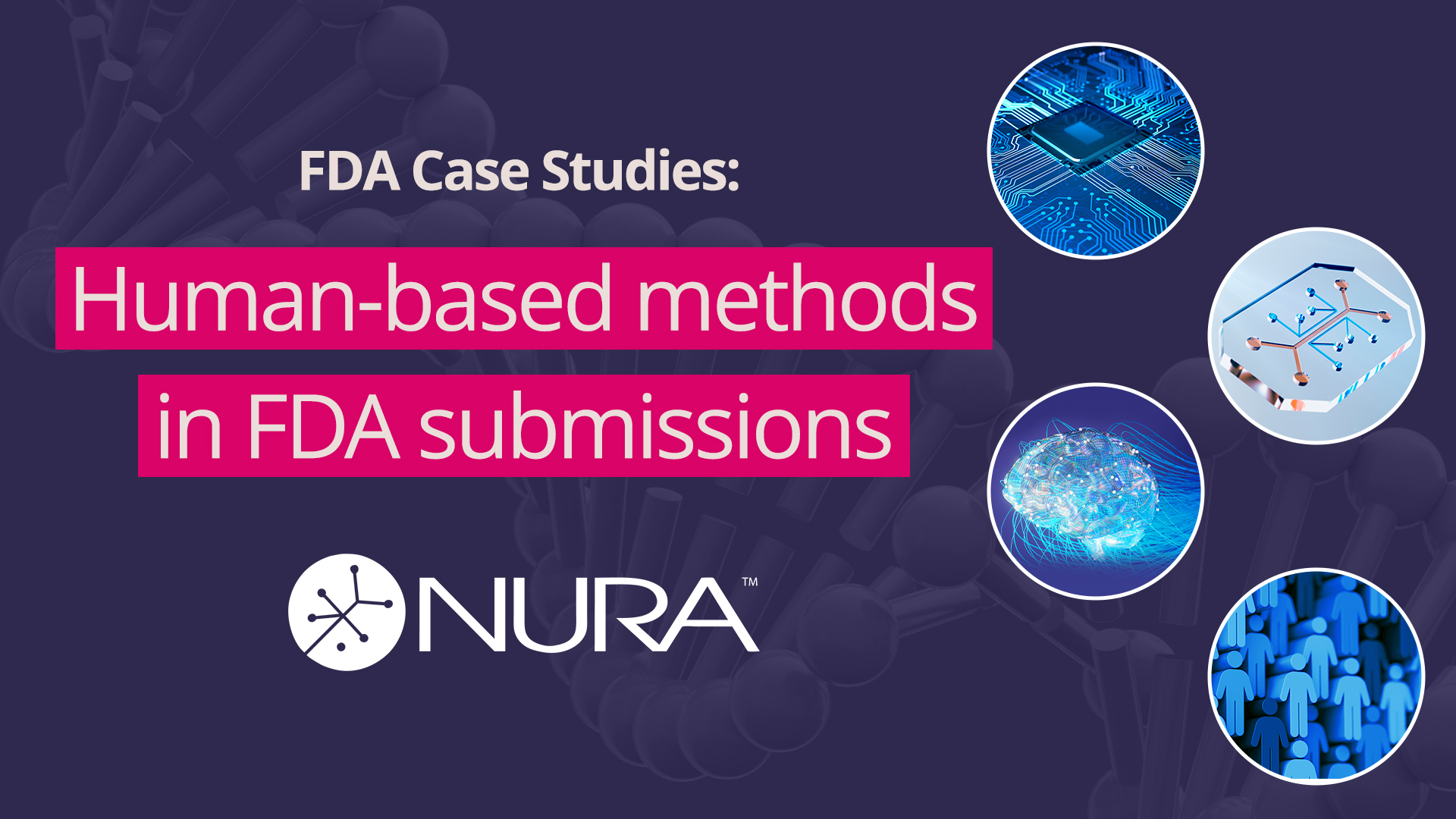NAM Use for Regulatory Application
Select a Section
Human-based methods in FDA submissions
The US Food and Drug Administration (FDA) regulates medical products, including investigational drugs, biologics, and devices. In order to progress into clinical trials with human patients, safety and efficacy information is submitted by industry and approved by the agency. Traditionally, submissions have included data from animal studies, but industry has started submitting NAMs in some instances.
Some companies submit NAMs alongside animal-based testing methods, while others submit in lieu of animal testing.
Use of NAMs in FDA submissions is expected to grow, as many toxicologists seek to use human-based approaches, and both the FDA and industry have made commitments to reduce animal use.
In this series, NURA features leaders in human relevant nonanimal methods to demonstrate medical product safety and efficacy. This platform offers an opportunity to share NAM use in FDA submissions, so the scientific community can learn from each other and be inspired to use and submit more NAMs to regulatory agencies.
Case Study #1: The Utilization of human-on-a-chip systems for regulatory submissions for neurological conditions
Tuesday, September 10, 2024, at 1pm ET
About the Speaker
Dr. James “J” Hickman is a founder and chief scientist at Hesperos, Inc., and the founding director of the NanoScience Technology Center, and a professor of nanoscience technology and electrical engineering at the University of Central Florida. Dr. Hickman has a doctorate from Massachusetts Institute of Technology in chemistry. For the past 30 years, he has been studying the interaction of biological species with modified surfaces.
Hesperos, Inc. is a biotechnology contract research organization leveraging its patented human-on-a-chip multiorgan platform to accelerate drug discovery by providing safety and efficacy testing for novel therapeutics. Hesperos has been constructing multiorgan human-on-a-chip or body-on-a-chip systems for toxicology and efficacy with up to six organs and has demonstrated long-term (more than 28 days) evaluation of drugs and compounds, which have shown similar response to results seen from clinical data or reports in the literature. Application of these systems are being used for amyotrophic lateral sclerosis; Alzheimer’s disease; rare diseases; diabetes; and cardiac, immune, and skeletal muscle mechanistic toxicity.
Presentation Abstract
Preclinical models for Neurodegenerative diseases such as Amyotrophic Lateral Sclerosis (ALS), Chronic Inflammatory Demyelinating Polyneurophathy (CIDP), Myasthenia Gravis (MG), Charcot-Marie-Tooth Disease and Alzheimer’s Disease (AD) has historically relied on animal models. Our research focus is on the establishment of functional in vitro systems to create organs and subsystems to model motor control, muscle function, myelination and cognitive function, as well as cardiac and liver subsystems. The idea is to integrate microsystems fabrication technology and surface modifications with protein and cellular components, for initiating and maintaining self-assembly and growth into biologically, mechanically and electronically interactive functional systems. Specific embodiments of this technology are the creation of a functional human NMJ system to understand ALS. MG, CMT and a long-term potentiation (LTP) for AD utilizing clinically relevant functional readouts. We have investigated four mutations found in ALS patients; SOD1, FUS, TDP43 and C9ORF72. The models have demonstrated variations of the disease phenotype compared to WT for NMJ stability and functional dynamics and data from this system has been utilized for INDs. We have also demonstrated the LTP model can reproduce Aβ pathology and tauopathy in human cortical neurons and demonstrated how AD therapeutics can recover these effects Examples will be given of some of the other human-on-a-chip systems being developed for CNS and PNS disease applications as well as the results Sanofi has used as efficacy data from one of our models to file the first IND only from MPS data that has enabled a clinical trial CIDP (#NCT04658472) that has now proceeded to a Phase III trial.
Learning Objectives:
- How multiple organ mimics can be assembled into one platform with a recirculating serum free medium.
- Clinically relevant functional readouts for electrical, mechanical, and barriers can be utilized in these systems.
- How disease relevant models can be developed from these systems and be utilized for regulatory submission.
Call for FDA Case Study Presenters
NURA would like to feature your human-based nonanimal approach in a webinar. We are looking for case studies of NAMs that have been submitted in IND applications. Present your NAM to a diverse regulatory audience of hundreds of professionals from industry, government, and NGOs, followed by an audience-led Q&A session.
Please submit your presentation title and abstract or speaker suggestion to eslankster [at] pcrm.org (eslankster[at]pcrm[dot]org).







